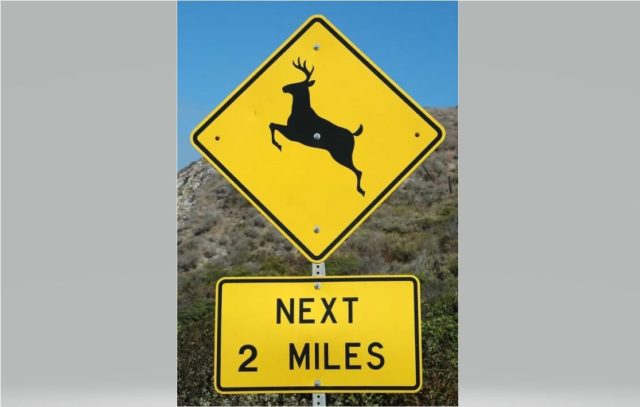
By Pepper Fisher
CLALLAM COUNTY – The stretch of Highway 101 between Sequim and Port Angeles has one of the highest rates of cars colliding with deer in western Washington. That’s according to the Washington State Department of Fish and Wildlife, who warn drivers that deer are especially active in November as the rut (mating season) is at its peak. Add to that the fact that a huge number of deer are migrating from high country to lower elevations where they spend the winter, and it all adds up to the need for drivers to be extra vigilant to protect both themselves and deer.
The number of wildlife hit by vehicles on Washington roadways is staggering. WSDOT maintenance crews remove roadkill from state highways and have been tracking the number of carcasses, including deer and elk, since the mid-1970s. Data from those efforts suggest that around 5,000 collisions with deer and nearly 300 collisions with elk occur each year. Numbers from 2018 through 2022 estimate that there are well over 13,000 annual deer-vehicle collisions.
Collisions with deer and other species are tracked through three sources by the Washington State Department of Transportation:
There are collision reports from local law enforcement and the State Patrol, carcass removal records from WSDOT employees, and one that you may not know about, community salvage records.
Did you know you can legally salvage road-killed deer and elk as long as you obtain a salvage permit within 48 hours of picking up a carcass? WDFW only asks that salvagers have their deer or elk tested for chronic wasting disease.
During the first full six years of legal salvage (2017–2022), community members reported the removal of 4,876 deer and 1,584 elk from Washington highways and, as we said, many of those happen between Sequim and Port Angeles.
By the way, WDFW reports that the average cost of a deer-vehicle collision was estimated at $14,014 per collision in 2022.
